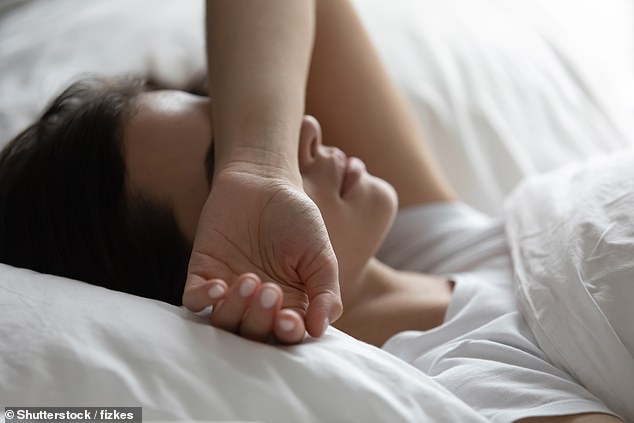A watch-like device could help a range of health problems from dizziness caused by low blood pressure to hot flushes and insomnia.
All can be linked to problems with the body’s internal temperature-monitoring system.
The new Embr wrist device works by helping ‘reset’ the autonomic nervous system, which is responsible for regulating this.
The device acts on the body’s temperature sensors, located on the skin, to convince the brain the temperature is lower or higher than it wrongly perceives it.
It works on the dense cluster of temperature receptors around the wrist, helping to re-educate the body’s internal temperature monitoring; resuming normal functioning can relieve symptoms.

A watch-like device could help a range of health problems from dizziness caused by low blood pressure to hot flushes and insomnia
The treatment is based on thermoregulation, the process by which body temperature is kept at around 37c even when it is very hot or cold outside.
Internal body temperature is regulated by the hypothalamus, an area of the brain that monitors it via the autonomic nervous system, which regulates a number of key body functions such as heart rate.
Thermoreceptors on the skin all over the body send signals to the brain recording the local temperature. If skin temperature is sensed to be too low — on a winter’s day, for instance — the hypothalamus takes steps to ensure the body generates heat. If it’s too high, heat is given off or sweat produced to cool the skin.
But in some conditions, thermoregulation can go awry. Postural orthostatic tachycardia syndrome (POTS) causes an abnormal increase in the heart rate after standing up and a drop in blood pressure. It’s five times more common in women aged 15 to 50.
As well as lightheadeness or dizziness and palpitations, it can cause insomnia related to thermoregulation — patients over-react to heat or cold, affecting sleep.
Now, in a trial at Stanford University in the U.S., 30 patients with POTS and thermoregulation problems will be given the Embr device to wear continuously for four weeks to see if their symptoms improve.
The device creates a 35-minute programme of cool or warm sensations delivered in a slow rhythm, picked up by skin receptors.

As well as lightheadeness or dizziness and palpitations, it can cause insomnia related to thermoregulation — patients over-react to heat or cold, affecting sleep
It’s thought the brain reacts to these changes to reduce or increase the sensation of heat or cold (in a similar way to putting ice on your arm to cool down). This effectively ‘re-tunes’ the brain to identify hot and cold correctly.
Meanwhile, separate trials are under way to assess its effectiveness in combating other problems relating to faulty internal temperature control, including hot flushes — which can be caused by menopausal hormone fluctuations and cancer treatment — and insomnia that’s not related to POTS.
A four-week trial is under way at Northwestern University in the U.S. involving 50 men with hot flushes owing to prostate cancer treatment to see if the device can improve their quality of life.
With insomnia, it’s thought focusing on the rhythmic sensation of the temperature changes, and matching breathing to each wave, will help users fall asleep.
In a study of 40 women (aged 45 to 58) with insomnia at Saint Joseph’s University, Philadelphia, those who used the device had a 21 per cent improvement in symptoms after four weeks.
Commenting on the device, Jaydip Ray, a professor of otology and neurotology at Sheffield University, said that this is an example of ‘biofeedback’, where the patient learns to control automatic body functions.
‘It is most encouraging that modern wearable biosensor technology utilising biofeedback techniques are becoming very accessible to us. They are easy to set up, use and control using smartphones. This definitely has a promising future.’
Tiny tweaks
Taking omega-3 after exercise reduces muscle soreness, a study by Westminster University shows. Volunteers were given omega-3 or placebo capsules to take three times daily for four weeks. Then they all did exercise. Those given omega-3 had less muscle damage and inflammation.
Source link : https://www.dailymail.co.uk/health/article-9877765/The-cooling-bracelet-ease-dizziness-insomnia.html











